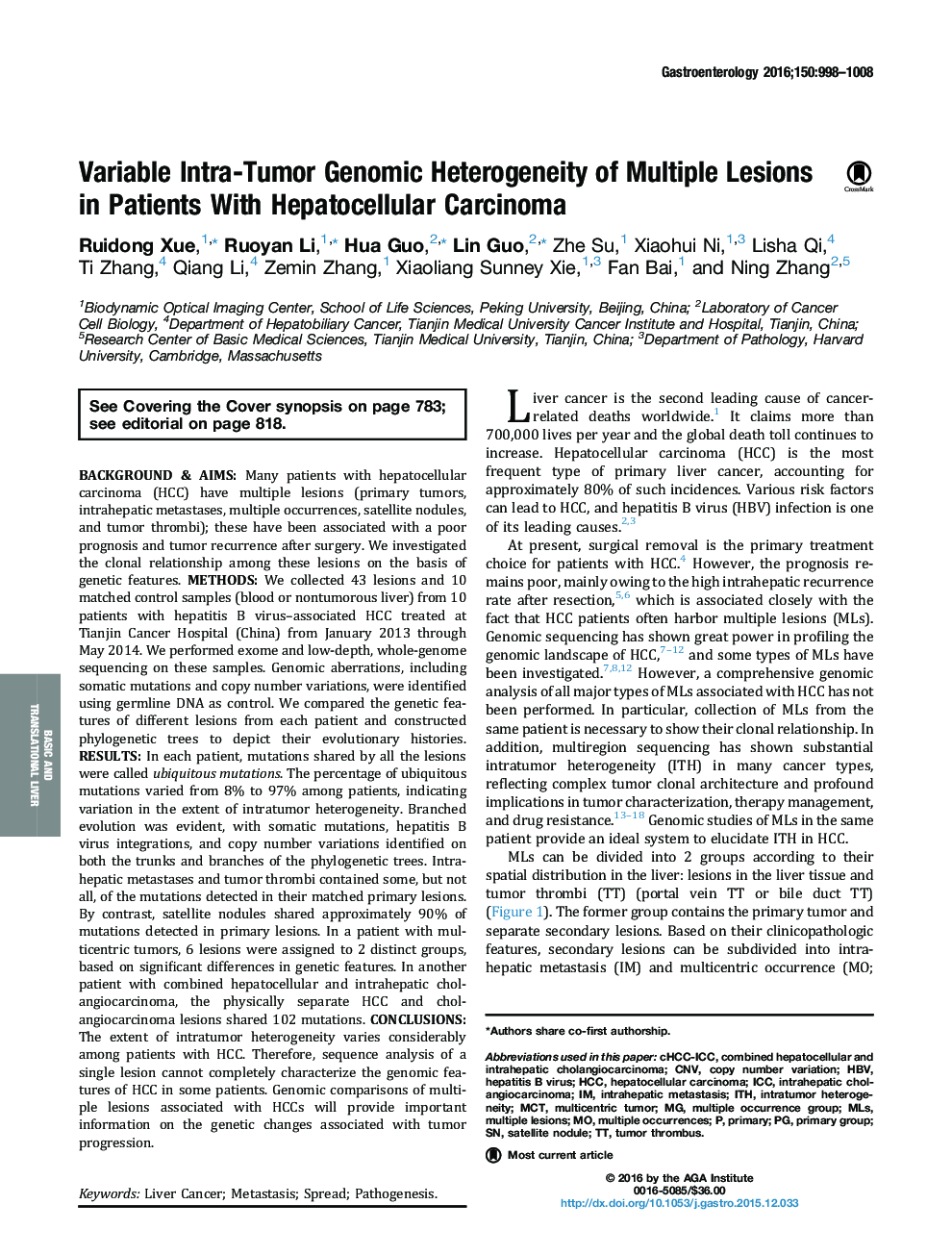| Article ID | Journal | Published Year | Pages | File Type |
|---|---|---|---|---|
| 3292203 | Gastroenterology | 2016 | 11 Pages |
Background & AimsMany patients with hepatocellular carcinoma (HCC) have multiple lesions (primary tumors, intrahepatic metastases, multiple occurrences, satellite nodules, and tumor thrombi); these have been associated with a poor prognosis and tumor recurrence after surgery. We investigated the clonal relationship among these lesions on the basis of genetic features.MethodsWe collected 43 lesions and 10 matched control samples (blood or nontumorous liver) from 10 patients with hepatitis B virus–associated HCC treated at Tianjin Cancer Hospital (China) from January 2013 through May 2014. We performed exome and low-depth, whole-genome sequencing on these samples. Genomic aberrations, including somatic mutations and copy number variations, were identified using germline DNA as control. We compared the genetic features of different lesions from each patient and constructed phylogenetic trees to depict their evolutionary histories.ResultsIn each patient, mutations shared by all the lesions were called ubiquitous mutations. The percentage of ubiquitous mutations varied from 8% to 97% among patients, indicating variation in the extent of intratumor heterogeneity. Branched evolution was evident, with somatic mutations, hepatitis B virus integrations, and copy number variations identified on both the trunks and branches of the phylogenetic trees. Intrahepatic metastases and tumor thrombi contained some, but not all, of the mutations detected in their matched primary lesions. By contrast, satellite nodules shared approximately 90% of mutations detected in primary lesions. In a patient with multicentric tumors, 6 lesions were assigned to 2 distinct groups, based on significant differences in genetic features. In another patient with combined hepatocellular and intrahepatic cholangiocarcinoma, the physically separate HCC and cholangiocarcinoma lesions shared 102 mutations.ConclusionsThe extent of intratumor heterogeneity varies considerably among patients with HCC. Therefore, sequence analysis of a single lesion cannot completely characterize the genomic features of HCC in some patients. Genomic comparisons of multiple lesions associated with HCCs will provide important information on the genetic changes associated with tumor progression.
